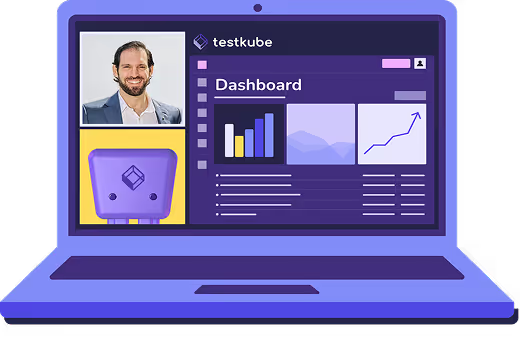Table of Contents
What Does Shift-Left Testing Mean?
In traditional software development, testing often occurs late in the lifecycle, after code is built. This leads to delayed releases when defects surface. Shift-left testing changes that by embedding validation into the earliest stages of CI/CD pipelines, so issues are caught before they reach production.
The term "shift-left" refers to moving testing activities to the left side of the SDLC timeline, metaphorically representing earlier phases of development. This approach transforms testing from a separate, final stage into an integrated practice throughout the development process.
Practices within shift-left testing include:
- Test-driven development (TDD) – writing tests before code to define expected behavior and drive implementation decisions
- Behavior-driven development (BDD) – defining requirements collaboratively through tests using natural language specifications that bridge technical and business teams
- Static code analysis – catching quality issues early through automated code reviews that identify potential bugs, security vulnerabilities, and code smells without executing the program
- Unit testing – developer-written validation of components that tests individual functions or methods in isolation
- Early integration testing – verifying services interact correctly before deployment by testing component interactions in integrated environments
- Continuous testing – automating test execution throughout the pipeline to provide immediate feedback on code changes
- Code reviews and pair programming – collaborative practices that identify issues during development rather than after
- Security testing early – incorporating security scans and vulnerability assessments from the start rather than as a final gate
Why It Matters
Shift-left testing helps organizations:
- Reduce the cost of fixing defects by addressing them earlier. Studies show bugs found in production can cost 100x more to fix than those caught during development
- Accelerate delivery cycles by minimizing late-stage blockers that delay releases and require extensive rework
- Improve code quality by fostering a testing-first mindset where developers consider testability and edge cases during implementation
- Provide faster feedback loops for developers, enabling them to fix issues while context is fresh rather than days or weeks later
- Enhance collaboration between developers, testers, and business stakeholders through shared understanding of requirements
- Increase deployment confidence by building quality into every stage rather than relying on final testing gates
- Support continuous delivery by ensuring code is always in a deployable state
- Reduce technical debt by preventing quality issues from accumulating over time
Challenges include upfront setup, developer training, test maintenance, and balancing speed with coverage. Organizations may face resistance to cultural changes, initial productivity slowdowns as teams learn new practices, and the need for investment in tooling and infrastructure. Success often requires cultural changes, better tool integration, and gradual adoption with clear metrics to demonstrate value.
Real-World Example
- A microservices team uses Testkube to run Postman API tests against ephemeral environments during pull requests, catching issues before merges.
- A web application team implements shift-left testing with automated unit tests on code commits, integration tests on feature branches, and contract tests on API changes.
- An e-commerce platform catches a critical payment processing bug during local development through automated unit tests, preventing what would have been a costly production incident affecting thousands of transactions.
- A financial services company integrates security scanning into their development workflow, identifying and fixing SQL injection vulnerabilities during code review rather than after deployment to production.
- A mobile app team uses shift-left testing to run automated accessibility tests on each commit, ensuring compliance requirements are met throughout development rather than discovering issues during final QA audits.
How Shift-Left Testing Works with Testkube
Testkube supports shift-left testing by:
- Running automated tests directly in ephemeral or staging environments
- Integrating with CI/CD workflows like GitHub Actions, GitLab CI, and Jenkins
- Supporting multiple test types (API, E2E, performance) early in pipelines
- Providing fast feedback with centralized dashboards and stored artifacts
- Enabling developers to execute the same tests locally that run in CI/CD, ensuring consistency across environments
- Scaling test execution in Kubernetes to handle large test suites without slowing down development cycles
- Offering parallel test execution to maintain fast feedback loops even as test coverage grows
Benefits and Trade-offs
Key Benefits:
- Early defect detection reduces debugging time and prevents bug accumulation
- Improved developer productivity through immediate feedback on code quality
- Higher test coverage as testing becomes a natural part of development
- Better collaboration between development and QA teams
- Reduced regression risk through comprehensive automated test suites
- Faster time to market by eliminating bottlenecks in the release process
Common Trade-offs:
- Initial time investment required to establish testing infrastructure and practices
- Learning curve for teams new to TDD, BDD, or automated testing frameworks
- Test maintenance overhead as codebases evolve and tests need updates
- False positives from overly sensitive tests can slow down development
- Infrastructure costs for running tests frequently across multiple environments
- Balancing thoroughness with speed to maintain rapid development velocity
Getting Started with Shift-Left Testing
Organizations new to shift-left testing should:
- Start small with one team or project to demonstrate value before scaling
- Prioritize critical paths by focusing initial testing efforts on high-risk, high-value functionality
- Invest in training to ensure developers understand testing principles and tools
- Automate gradually by starting with unit tests, then expanding to integration and E2E tests
- Establish clear metrics like defect detection rates, time to fix bugs, and deployment frequency
- Choose the right tools that integrate seamlessly with existing development workflows
- Foster a quality culture where testing is everyone's responsibility, not just QA's
- Iterate and improve based on feedback and metrics to continuously refine testing practices





